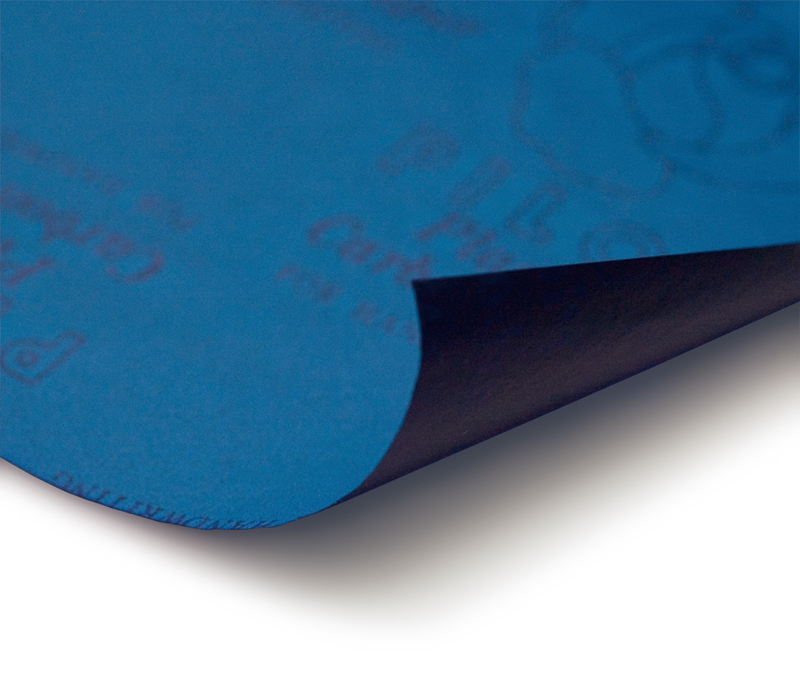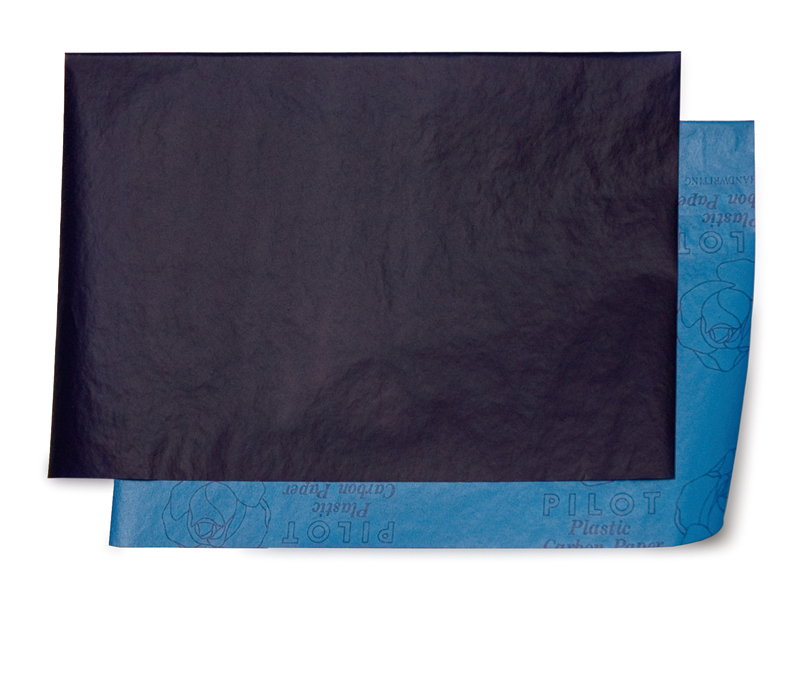Carbon Paper
カーボン紙
Kābonshi
CATEGORIES
Carbon paper comprises colorant mixed and kneaded with oil and wax and laid over thin paper (carbonizing base paper). It is used for copying text and diagrams. It is generally used for copying office documents and forms, etc. but when creating block prints and paintings, it can be used to copy a draft diagram or illustrated plate onto a plate or medium.
The basic method is to place the carbon paper with the colorant side down on the surface of the plate or other medium that will hold the copy, and then overlay that with the draft to be copied. Then trace the draft design with a ball-point pen or pencil. With the pressure of the pen, the carbon paper will be forced onto the medium surface where the colorant will adhere and copy the design. When doing this, it will be easier to see the traced lines if red or colored pen is used.
Carbon paper colorant is in black, red and blue, etc. Carbon black and other pigments are used in black, and oil-soluble dyes are used in red and blue. Carbon paper can be coated on one side or on both. Nenshi works in a similar way to carbon paper. This comprises non-oily coloring such as charcoal, mud pigment or red iron oxide, etc. adhered to washi paper.
Carbon paper first appeared in England in the early 19th century. At that time, it comprised a mixture of pig fat and soot coated on paper. Imported carbon paper seems to have been imported in Japan and used under the title “Tansanshi” (lit. carbonated paper) in the Meiji period and the domestic product was washi paper coated in a solution of soot and oil. Carbon paper is used less often in modern times with the growing popularity of photocopiers but it is still used extensively today because of its convenience. Carbon paper can be purchased at art supply and stationery stores.
RELATED PAGES

 Top: The side with the colorant
Bottom: The base paper side
Top: The side with the colorant
Bottom: The base paper side
